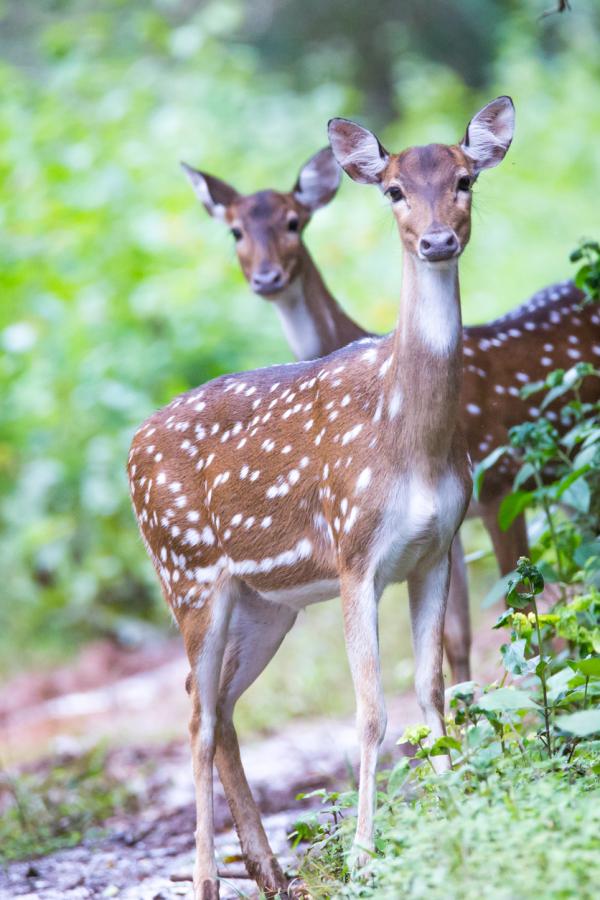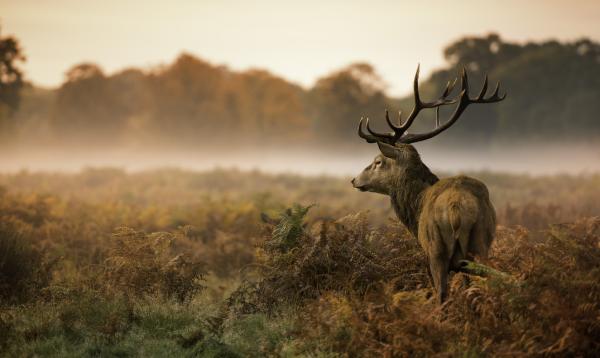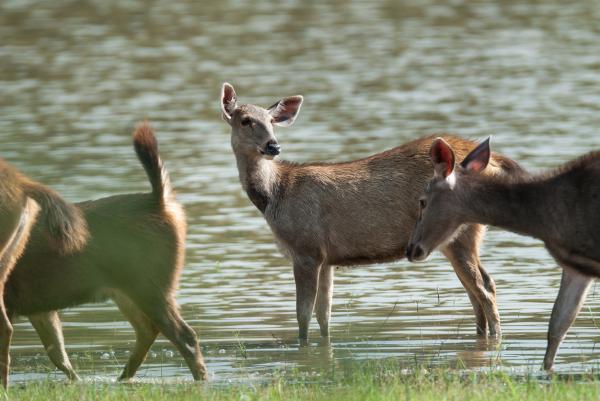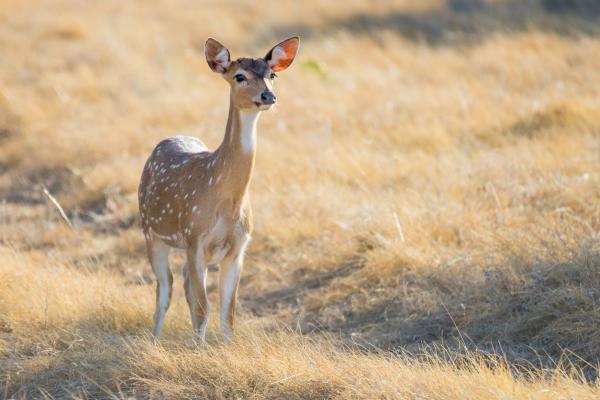Deer as Pets: Guidelines and Tips


From the white-tailed deer to Sambar deer, these gentle and majestic creatures are wild animals that belong to no individual. In many countries, deer are held in trusts and safe parks for their benefit and our own. It is illegal for people to hold or confine deer without a permit in most states and countries of the world.
The only facilities permitted to possess native or foreign deer specimens in most states are generally focused on research, education and rehabilitation. These facilities, run by professionals are inspected regularly to check that the animals are treated right and that all health and safety standards are maintained in compliance with requirements for disease testing, record keeping, and regulating wildlife.
However, there have been some instances of people keeping deer - for example, Audrey Hepburn had a fawn named Pippin. But can you keep a deer as a pet? What do they need to stay happy and healthy? Stay with us at AnimalWised and learn all about deer as pets with our guidelines and tips.
Can deer be dangerous for humans?
Deer, much like other wild species no matter how gentle they look, can be dangerous to humans when confined or threatened. As they grow and develop, deer can become aggressive. Males are more likely to attack, especially during the breeding season; their antlers can also be dangerous. Injuries and deaths from deer attacks are also on the rise.
Can deer be confined?
Moving deer or keeping them in facilities increases the risk of diseases, including Chronic Wasting Disease and Bovine tuberculosis. Deer require a lot of space, and it is cruel and unjust to keep deer as pets if you don't have a large, forested outdoors area for them to roam.
Moreover, tame deer cannot be rehabilitated or let go into the wilderness, because they do not know how to fend for themselves. Domesticated deer can become demanding and seek attention and food from caretakers beyond what you may expect. Even hand-raised deer have been known to attack their human keepers and trample on them.
Pet deer cannot be released into the wilderness, and neither can they be given to a zoo or nature park because they could infect or attack other animals and human visitors. Think twice before adopting a pet deer.

Can deer be domesticated?
When born in the wild, deer are not meant to be raised either alone or as part of a human family; it is unfair to separate them from their herd and natural habitat, and they are difficult to domesticate. At the most, they will tolerate your presence if you feed them.
Even when bred in captivity, deer do not make good pets. While they can be tamed, and they are small, manageable and adorable at first, they become unmanageable and wary as they mature. Domesticated deer may attack humans during mating season, and they can also turn dangerous to protect their young.
Deer will demand freedom, but placing a deer bred in captivity back in the wild without teaching it to fend for itself is tantamount to animal cruelty.
What to feed a deer
While we have already said that keeping deer as pets is not such a good idea, there are circumstances in which you may have to feed a deer. In case you have a small-scale natural preserve or deer farm, for instance, you must follow a certain code of conduct and provide regular nourishment to the animals.
For their bones and organism to become strong and agile in order to survive in the wild, a deer or fawn needs to be fed rich formula that provides nutrition for proper growth. There are many options to feed a young, captive deer, from goat milk to soymilk and baby formula; ask a vet for the best choice for your deer's size and age.

Introducing a new diet to a deer
Deer cannot take new food suddenly. It takes a couple of weeks for deer to adjust to a new diet, and so they need to be fed gradually. Introducing new types of food into the deer's diet will help their digestive system to learn to process it.
Deer are herbivorous ruminant animals, so they thrive on vegetables, fruits, grasses and lichen found in woodlands. Therefore, feeding them foods rich in carbs or fat can be lethal. To start with, combine supplementary food with the natural diet of the deer. Include a small amount of the new food and gradually incorporate more replacing their natural diet with specially formulated deer food mixes.
What is the best diet for a deer?
Deer feed mixes can be found in either pet supply stores or feed mills. These mixes are a combination of oats, soybeans, alfalfa, molasses and other substances rich in nutrients such as vitamins and minerals. This kind of food is easy for the deer to digest and makes a perfect supplement to their natural diet.
Things to take into account
Deer need to be fed the right food, as they have sensitive digestive systems. If formulated deer food mixes are not available, oats are the next best thing. They provide the deer with the type of fiber and carb content they need.
Fruits and vegetables are also a safe choice for deer, from apples to grapes, cherries, pears, carrots, and snap peas. Acorns found in the wild are another safe source of sustenance for your pet deer.
Forbidden food for deer
Never feed a corn diet to a pet deer, as this complex, refined and high carb diet can cause them to become sick and even die. It's always a better choice to cut down tree branches and use its vegetation and foliage to feed the deer.
Creating a good habitat for a pet deer
To keep deer as pets, our most basic guideline is having wide open spaces for them to roam. If you want to create a healthy and safe habitat for your deer to stay happy and grow well, make sure that they get natural foliage for food by planting more vegetation.
If you live in a cold climate, choose woody vegetation during the winter months, as this is the time of the year when the deer's natural food sources dry up. Start introducing food slowly so that the deer is not harmed. Set up the troughs and feeders as far away from the home as possible. Early morning or sunset is a good time to groom and feed a pet deer.
Besides growing more trees in the deer's range, get involved with deer rehab or conservation groups to educate yourself before you set out to establish a deer farm or to keep deer as pets. As we said, it is not recommended to keep deer as pets, as they are happier when free; if you do choose to keep them, you must be completely sure you can offer them the right space and diet.

If you want to read similar articles to Deer as Pets: Guidelines and Tips, we recommend you visit our Basic care category.









